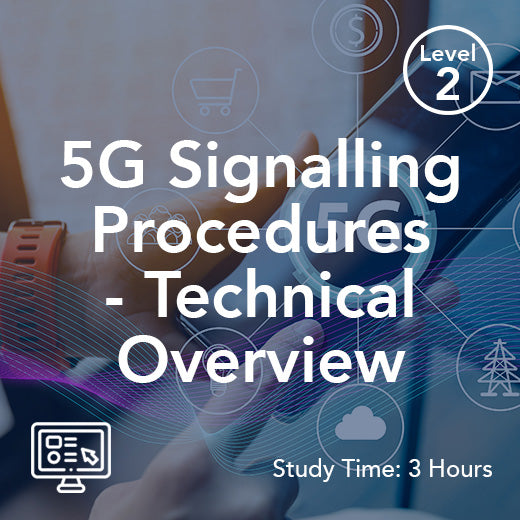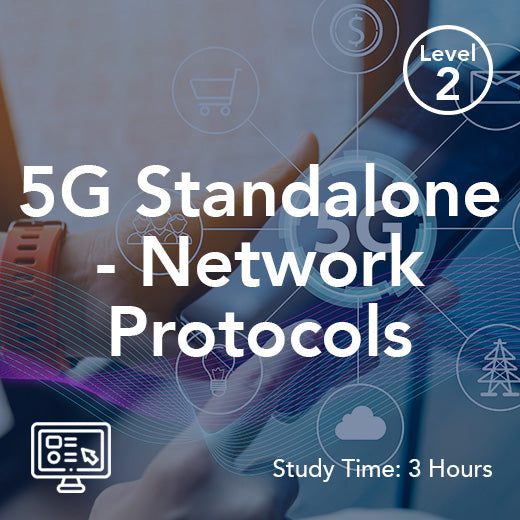Comprendre le 3GPP : l’épine dorsale des réseaux mobiles modernes
- , par Stephanie Burrell
- 8 min temps de lecture
Dans le monde actuel, où tout va très vite et où les smartphones sont devenus indispensables au quotidien, la technologie qui sous-tend les communications mobiles passe souvent inaperçue. Au cœur de cette connectivité fluide se trouve le 3GPP (3rd Generation Partnership Project), une collaboration mondiale qui définit les normes des réseaux mobiles. De la transmission de données à haut débit et du haut débit mobile à la prise en charge des dernières technologies de communication vocale et vidéo, le 3GPP joue un rôle crucial pour garantir le bon fonctionnement de nos appareils partout dans le monde. Cet article explore le fonctionnement du 3GPP, son impact sur l'industrie mobile et explique pourquoi il est un pilier de la connectivité moderne. Que vous soyez passionné de technologie ou simplement curieux de comprendre le fonctionnement de votre téléphone, comprendre le 3GPP est essentiel pour apprécier pleinement cette technologie que nous tenons souvent pour acquise.
Introduction au 3GPP
Le 3GPP est le moteur des communications mobiles modernes et joue un rôle essentiel dans l'élaboration des normes qui nous permettent de rester connectés. Comprendre les origines et le fonctionnement du 3GPP est crucial pour toute personne intéressée par les technologies et les communications.
Origines et évolution
Le projet de partenariat de troisième génération (3GPP) est né du besoin d'un cadre unifié pour les communications mobiles. Créé en 1998, il a débuté par une collaboration entre des organismes régionaux de télécommunications afin de créer une norme mondiale, garantissant la compatibilité et l'interopérabilité des réseaux.
Au fil des ans, le 3GPP a élargi son champ d'action, passant de la définition des normes pour les réseaux 3G à l'intégration des avancées en matière de 4G et de 5G. Cette évolution a été motivée par le besoin de débits de données plus élevés et de protocoles de communication plus efficaces.
Issu des premiers réseaux mobiles, le 3GPP s'est constamment adapté aux évolutions technologiques, reflétant le dynamisme du secteur des télécommunications. Sa capacité d'évolution lui a permis de rester pertinent et d'être aujourd'hui un pilier de l'innovation dans le domaine des technologies mobiles.
Rôle dans les réseaux mobiles
Le rôle du 3GPP ne se limite pas à l'établissement de normes ; il est essentiel au développement des réseaux mobiles à l'échelle mondiale. En définissant des protocoles, il garantit une communication fluide entre les appareils sur différents réseaux mobiles, quels que soient le réseau et la région.
De plus, les spécifications du 3GPP influent sur les performances et la fiabilité des réseaux mobiles. Cela garantit aux utilisateurs une connectivité constante, que ce soit pour accéder à Internet ou passer des appels vocaux, conformément aux normes des organismes de normalisation des télécommunications.
En intégrant les dernières technologies et avancées sans fil, le 3GPP aide les réseaux à prendre en charge de nouveaux services et applications, repoussant ainsi les limites des capacités des appareils mobiles. Il constitue un pilier de l'infrastructure mobile moderne, à la base des progrès rapides que nous observons aujourd'hui.
Structure du 3GPP
Comprendre la structure du 3GPP est essentiel pour apprécier comment il élabore et maintient les normes internationales. Cette section explore son organisation interne et les processus qui guident sa prise de décision.
Groupes de spécifications techniques
Le 3GPP est divisé en plusieurs groupes de spécifications techniques (TSG) , chacun responsable de différents aspects des communications mobiles. Ces groupes sont chargés de créer et de maintenir des normes, en veillant à ce qu'elles répondent aux besoins évolutifs du secteur.
Réseau d'accès radio (RAN) TSG : axé sur les technologies de communication sans fil.
Aspects des services et des systèmes TSG (SA) : Traite de la prestation de services et de l'architecture du système.
Réseau central et terminaux TSG (CT) : concerne les interfaces du réseau central et des terminaux.
Chaque TSG est subdivisé en groupes de travail, chacun se concentrant sur un domaine technique spécifique. Cette structure permet au 3GPP de couvrir un large éventail de technologies, tout en maintenant un haut niveau d'expertise dans chaque domaine.
Processus de prise de décision
Le processus décisionnel du 3GPP repose sur une collaboration entre les parties prenantes, visant à parvenir à un consensus dans l'élaboration des normes. Ceci garantit la robustesse et la large acceptation des normes.
Le processus débute par des propositions, suivies de discussions au sein de groupes de travail. Après plusieurs phases d'examen et de révision, les propositions sont soumises aux groupes de travail techniques (GTT). Elles y font l'objet d'un examen plus approfondi et d'un perfectionnement.
Une fois approuvées au niveau du TSG, les normes sont formalisées et publiées. Ce processus rigoureux garantit leur exhaustivité et leur adéquation aux divers besoins de l'industrie mondiale, assurant ainsi la cohérence et la fiabilité des réseaux mobiles.
Technologies et normes 3GPP
Le 3GPP est synonyme d'évolution des technologies mobiles, des débuts du GSM aux capacités de pointe de la 5G. Ses normes ont stimulé l'innovation et établi la référence en matière de communication mobile.
Transition du GSM à la 5G
La transition du GSM à la 5G a été un parcours colossal, chaque génération apportant des améliorations significatives. Le GSM a débuté comme un remplacement numérique des réseaux analogiques, offrant une meilleure qualité vocale et une sécurité accrue.
Avec la 3G , les services de données sont devenus possibles, permettant la navigation internet mobile. La 4G a marqué un tournant, offrant un transfert de données à haut débit et ouvrant la voie aux applications mobiles et aux services de streaming.
La 5G représente l'aboutissement de cette évolution, offrant des débits ultrarapides, une faible latence et la capacité de connecter des millions d'appareils. Chaque génération s'appuie sur la précédente, illustrant le rôle du 3GPP dans le développement des technologies mobiles.
Impact sur l'innovation mobile
Les normes du 3GPP ont un impact considérable sur l'innovation mobile. En définissant des lignes directrices claires, elles fournissent un cadre permettant le développement et la mise en œuvre de nouvelles technologies.
Cohérence : Les normes garantissent la cohérence entre les appareils et les réseaux, favorisant ainsi l'innovation.
Interopérabilité : les appareils peuvent fonctionner de manière transparente sur différents réseaux.
Évolutivité : Les normes permettent des solutions évolutives, capables d'intégrer de nouveaux services et applications.
L'influence du 3GPP est manifeste dans le rythme rapide de l'innovation mobile, qui pousse l'industrie vers de nouvelles possibilités et expériences.
Influence mondiale du 3GPP
L'influence mondiale du 3GPP est considérable : il façonne les normes mobiles et garantit leur conformité dans tous les pays. Son approche collaborative, qui inclut divers partenaires, rassemble les leaders du secteur pour faire progresser les communications mobiles.
Collaborations et partenariats
Le 3GPP s'engage dans des collaborations et des partenariats pour améliorer ses normes. En travaillant avec des organismes internationaux et des partenaires de représentation du marché, il garantit la pertinence mondiale de ses spécifications.
Organismes régionaux : Partenaires des organisations régionales de télécommunications.
Leaders du secteur : Collabore avec les acteurs clés du secteur des télécommunications.
Institutions de recherche : Collaborent au développement de technologies et de solutions innovantes.
Ces partenariats permettent au 3GPP de rester à la pointe des avancées mobiles et d'améliorer ses capacités de service, reflétant ainsi les besoins d'un marché mondial diversifié.
Rôle en matière de réglementation et de conformité
Le 3GPP joue un rôle de réglementation et de conformité, travaillant en étroite collaboration avec les organismes de réglementation internationaux pour aligner ses normes sur les exigences mondiales.
Cohérence : Garantit que les normes sont conformes aux cadres réglementaires.
Conformité : Facilite la conformité aux lois et réglementations internationales.
Recommandations : Fournit des recommandations aux opérateurs de réseau et aux fabricants.
Ce rôle renforce la crédibilité et l'acceptation des normes 3GPP, favorisant une approche unifiée des communications mobiles à l'échelle mondiale.
Perspectives d'avenir du 3GPP
Tourné vers l'avenir, le 3GPP se prépare à relever de nouveaux défis et à saisir de nouvelles opportunités. Son approche novatrice, notamment par le développement de services de proximité, le positionne comme un acteur clé de la prochaine vague d'avancées technologiques.
Préparation à la 6G
Alors que le déploiement de la 5G est encore en cours, le 3GPP prépare déjà le terrain pour la 6G. Cette future génération, s'appuyant sur le cœur de réseau à commutation de paquets évolué, promet de révolutionner la connectivité en offrant des vitesses et des capacités sans précédent.
Recherche et développement : S'engager dans la R&D pour explorer de nouvelles technologies.
Collaborations : Partenariat avec les leaders du secteur pour définir les normes 6G.
Innovation : Encourager l'innovation pour repousser les limites de la communication mobile.
En se préparant à la 6G, le 3GPP s'assure de rester à la pointe de la technologie, prêt à embrasser la prochaine ère des réseaux mobiles.
Défis et opportunités à venir
Le 3GPP doit relever des défis et saisir des opportunités face aux évolutions futures. L'évolution technologique rapide, notamment le besoin de services de multidiffusion, exige adaptabilité et clairvoyance.
Intégration : Garantir une intégration harmonieuse des nouvelles technologies.
Sécurité : Répondre aux préoccupations en matière de sécurité grâce à des normes rigoureuses.
Durabilité : Développer des solutions durables pour des réseaux économes en énergie.
Ces défis, tels que la mise en œuvre du service de priorité multimédia, offrent au 3GPP des opportunités d'innover et de diriger l'industrie, perpétuant ainsi son rôle de pilier des réseaux mobiles modernes.

































